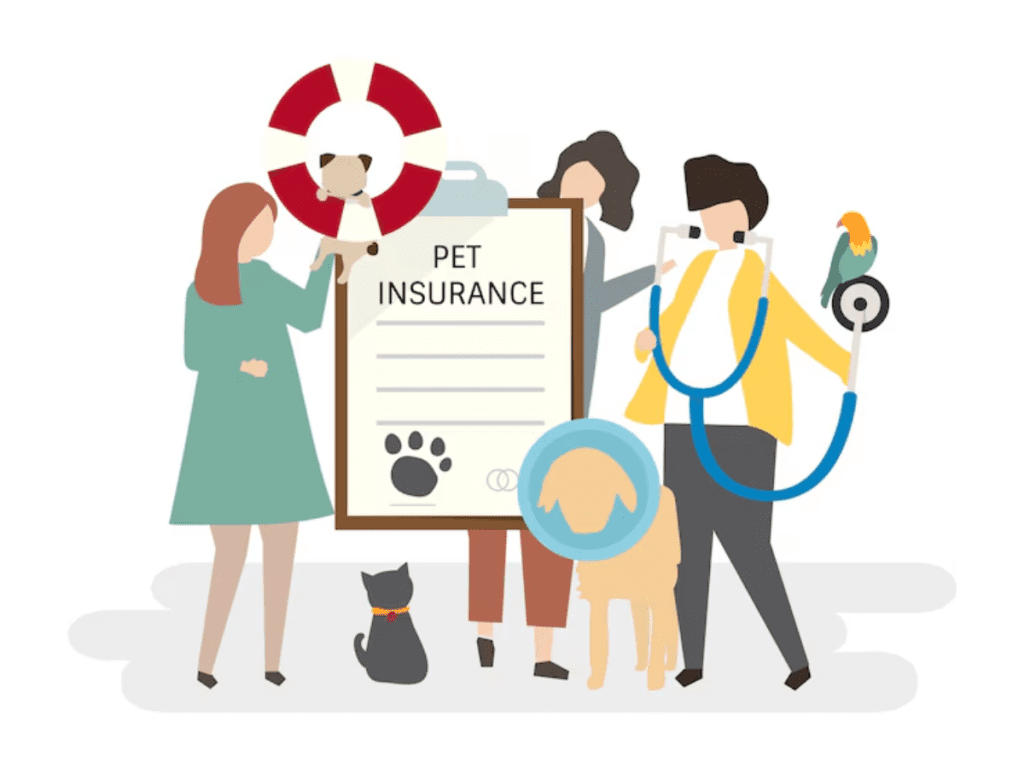Introduction
Since pets remain considered an integral part of the family the significance of veterinary treatment in preserving their well-being and longevity has increased exponentially Owners of pets increasingly recognize the value of periodic check-ups, vaccination, and timely treatment of illnesses or injury Yet these increases in care have resulted in added costs through the integration of advanced diagnostic equipment specialist consultations and advanced forms of treatment The transformation in the care of pets has been an advantageous phenomenon from a quality of life and outcomes perspective but what it also translates to is the need for careful planning for financially responsible pet ownership
Analyzing the Average Costs of Veterinary Care
Regular vet visits by themselves can be expensive with wellness exams vaccinations and parasitic prevention treatments adding up over time On average a yearly checkup for a cat or dog can run anywhere from one hundred to three hundred dollars along with simple tests and vaccinations However once other services like blood work dental cleaning or radiographs are required the bill can quickly escalate Emergency vet care is even more so with typical emergencies like gastrointestinal obstruction or poisoning running into thousands of dollars A procedure to remove an intestinal blockage easily runs over three thousand dollars whereas more complicated procedures such as orthopedic surgery can run five thousand dollars or more
Long-Term Chronic Conditions and Financial Burden
In addition to emergency treatment numerous pets are diagnosed with chronic health issues that need to be treated managed and monitored on an ongoing basis Diseases like diabetes kidney disease hypothyroidism or arthritis are prevalent in older pets and these diseases necessitate constant medication special diets and regular visits to the vet For instance a dog with diabetes might need daily insulin shots frequent glucose testing and regular visits to the vet which can cost several thousand dollars per year Over the span of several years these costs can become financially burdensome particularly when there is no insurance to help cover the expenses
Emergency Situations and the Unpredictable Nature of Pet Health
Even the healthiest of pets can have sudden health crises like car accidents injuries from other animals or unforeseen internal problems These are emergencies that need immediate medical care and usually include after-hours services which are more costly Emergency clinics charge a premium for their readiness and willingness to offer life-saving treatment Depending on the severity of the problem emergency treatment can cost anywhere from several hundred to several thousand dollars and the unpredictability of these events makes it hard for owners to prepare financially
The Role of Veterinary Specialists and Advanced Treatment Options
Just as human medicine includes specialists veterinary care now involves referral to professionals who focus on specific areas such as cardiology oncology neurology or dermatology While this is a tremendous asset for pet health it also contributes to higher expenses Specialized diagnostic tools like MRI scans CT scans echocardiograms and endoscopies are now widely used in veterinary settings and they come with high costs An MRI for a pet may cost between two thousand and three thousand dollars while chemotherapy treatments for cancer can add up to ten thousand dollars or more These numbers highlight the significant financial investment required to provide comprehensive and advanced veterinary care
The Psychological Burden of Exorbitant Veterinary Expenses with No Insurance
When a treasured pet undergoes a medical emergency the stress and anxiety felt by owners is intensified by the financial burden of being able to pay for necessary care Without the support of pet insurance families are frequently left being pushed into making devastating choices like forgoing a needed procedure or contemplating euthanasia solely based on a lack of funding These situations are personally heartbreaking as they are essentially a choice between a pets health and the finances of the family During those trying times having insurance protection makes a life-altering difference by enabling care without hardship or delay
Understanding Pet Insurance and How It Works
Pet insurance is meant to offer financial coverage against the cost of veterinary services based on the policy selected it can pay for accidents illnesses chronic conditions surgeries drugs and occasionally regular wellness care Policies typically entail the payment of a monthly or yearly premium plus a deductible and copay after which the insurance company reimburses a portion of the total cost Most pet insurance policies enable owners to take their pet to any licensed veterinarian and have claims reimbursed making the system convenient and accessible The major advantage is that it stretches out the cost of treatment over time and reduces the impact on finances from large or unexpected bills
Types of Pet Insurance Plans Offered in the Market
There are a number of pet insurance plans that suit various needs and budgets The most elementary one is the accident-only plan which insures injuries caused by incidents like falls car accidents or swallowing foreign objects It is generally the cheapest one and is best suited for owners who are concerned mainly with emergency coverage More comprehensive policies are the accident and illness policy which insures treatment of diseases infections hereditary and congenital conditions Lastly some insurance companies provide wellness or preventive care add-ons which insure vaccinations routine checks dental cleaning and other preventive treatments Even though these more comprehensive policies cost more they provide a more comprehensive safety net for pet health
Financial Comparison With and Without Pet Insurance
To gain a practical appreciation of the value of pet insurance it is useful to put real-life money comparisons into context Let’s say that a pet requires a surgery that will cost five thousand dollars Without insurance all of this money has to come out of the owners pocket incurring a great expense on the owners finances If the pet has a policy covering it with an eighty percent benefit rate and a five hundred dollar deductible then the out-of-pocket expense falls to about fifteen hundred dollars plus the deductible This sizeable decrease in expense can mean the difference between going ahead and receiving needed care or delaying or denying treatment Over the long run the savings yielded by insurance can far outweigh premiums costs particularly where significant health incidents are involved
Planning Ahead by Enrolling Early
One of the most intelligent moves for financing pet health costs is signing up for insurance coverage at the beginning of a pets life Younger animals are less likely to have prior health issues that result in lower premiums and wider coverage Because pre-existing conditions are usually excluded by most insurance companies signing up early guarantees that whatever health problems crop up later on will still be covered Further younger pets tend to be more accident-prone with their energetic and inquisitive nature making accident coverage especially important in the earlier years of life Early sign-up also ensures consistency in coverage as the pet ages and health vulnerabilities increase
Dispelling Common Misconceptions about Pet Insurance
In spite of its advantages many pet owners refrain from buying insurance out of general misconceptions A prevalent misconception is that it’s not worth the expense or savings accounts would serve better While saving is always a good thing the truth is an unexpected crisis can easily outstrip the saved amount leaving owners cash-strapped Another myth revolves around the idea that pet insurance will pay for everything In reality most policies involve deductibles limits and co-payments It is also a myth that insurance is only beneficial for ill or older pets In fact earlier and healthier enrollment tends to result in superior coverage at lower pricepoints Maxing benefits and avoiding letdowns are achieved through comprehending the terms of coverage and selecting an appropriate plan
Financial Preparedness Has Psychological Advantages
Having pet insurance in place can bring considerable peace of mind to pet owners This planning enables them to concentrate on their pets’ well-being without the additional concern about how to pay for treatment In stressful medical cases quick decisions are paramount and cost issues can impede care or create uncertainty Insurance coverage eliminates hesitation and allows needed procedures diagnostics and therapies to be undertaken without unreasonable delay It also promotes owners to seek preventive care and routine checkups which are essential for early detection and better outcomes
How Insurance Promotes Responsible Pet Ownership
Pet ownership carries with it an obligation to fulfill its needs and provide for medical care Insurance serves as a valuable means of honoring this obligation by allowing owners to face health hurdles head-on without sacrificing care Whether confronted with short-term problems such as infections and injuries or treating long-term afflictions insurance gives owners the authority to select the finest options on hand rather than deciding on price alone Thus it fosters an improved level of pet care and ensures that animals are treated fairly no matter the owner’s economic condition
Selecting a Policy That Suits Your Needs
Not all pet insurance policies are identical so it is important to select one that fits your needs budget and expectations Begin by considering what type of coverage you require depending on the pet’s age breed and known health risks Certain breeds are prone to certain conditions which could make illness coverage more vital Consider the payback structure annual limits and waiting periods Also review customer reviews speed of claim handling and whether or not the insurer lets you see your preferred vet It is also worth looking for multi-pet discounts or loyalty rewards that can reduce the cost of insurance over the long term

